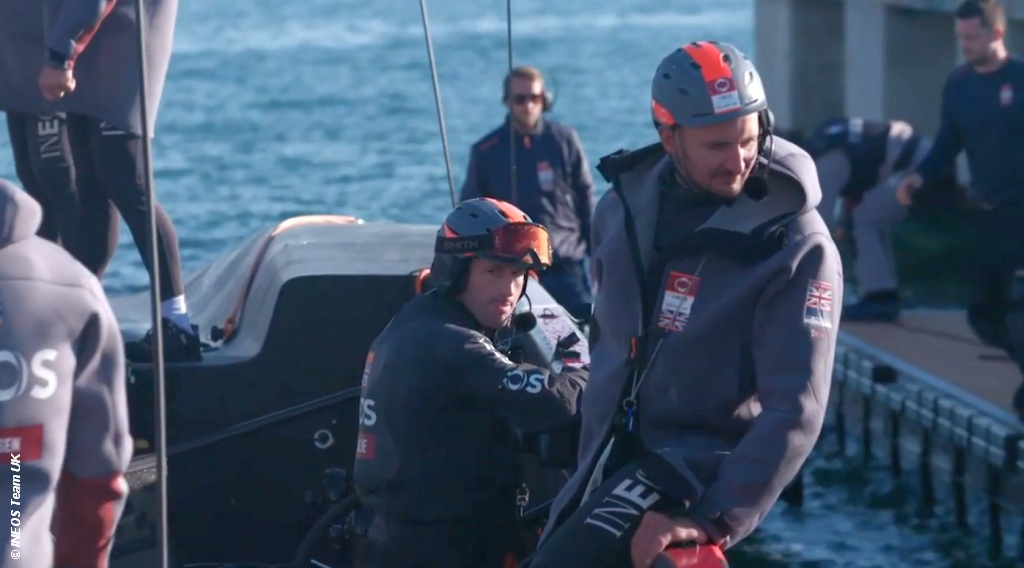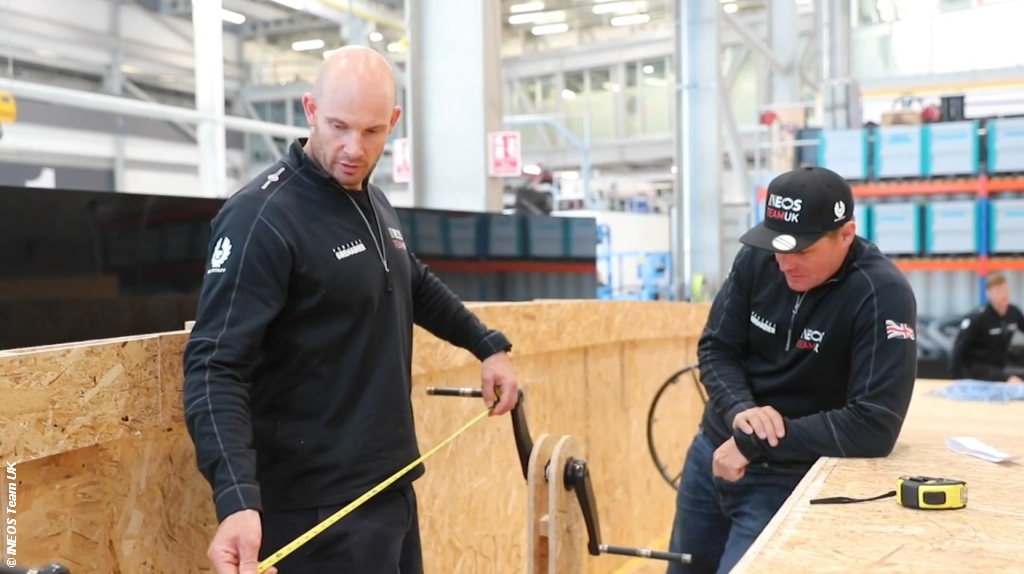Head back to September 2018 as Dave Carr gives insight into how the deck layout for Britannia (Ineos RB1) was developed.
America’s Cup grinders have a massive impact on the deck layout itself, because they provide such an important energy source for the AC75.
It is mission-critical to maximise efficiency in the cockpit areas of Britannia both in aerodynamics and in creating the best performance positions for the crew.
As you can see in the video, despite the expensive high-tech digital design programme, getting the crew into the cockpits efficiently is a tight squeeze . . .
Call for the man with the tape . . .
The sailors have a lot of input into their positions and they are always developing.
For both their boats INEOS have built life-size cockpit models. The wooden cockpits were regularly updated as they received new drawings from the designers.
These models are vital tools, a sailor can jump into the cockpit were they will sail and make sure they can reach and operate everything.
If someone needs to be able to cross the boat they can test how they will get in and out of the cockpits.

This is important and its done over many hours of chopping and changing the model in the boat shed.
The previous AC Catamarans were smaller so the crew had to spend a lot of time grinding on our knees.
Kneeling is a less powerful grinding position, but it kept them out of the wind improving aerodynamics.
Now the cockpits are a lot deeper so they can stand up in a preferred grinding position and remain out of the wind.

The development from the first boat (RB1) to the second boat (RB2) has been interesting.
For the first boat there was a limited amount of time from receiving the rule to starting the build.
The emphasis was on speed of build and getting on the water as quick as possible.
The second boat has evolved from their learnings on boat one, but also from observing the design directions other teams have taken.

“Are you sure this is it Ben?”
Related Post:







